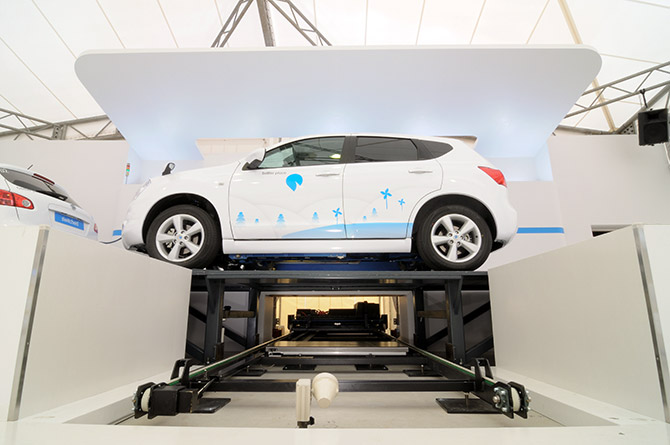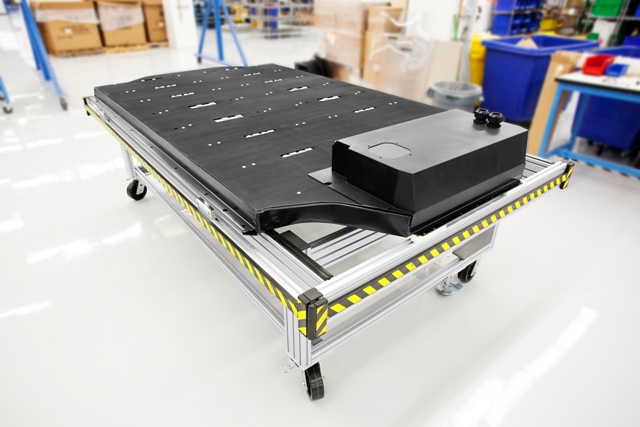Just two months ago, we published an April Fool's piece about a fictional new BP cell research project that would allow battery packs to be refilled at fuel station pumps.
Truth is stranger than fiction, truly.
Yesterday, the Massachusetts Institute of Technology described a nascent research project--a real one--involving a battery that could recharge fully in mere minutes, by pumping out and refilling tanks that contain thick liquids that serve as the cell's electrodes.
Liquid electrodes
The idea is that the cell's cathode and anode are not solid metallic compounds, as in current battery types from lead-acid to lithium-ion. Instead, each electrode is composed of small particles suspended in a special carrier liquid that includes the electrolyte.
Those tanks of liquid could be in separate locations within a car body from the chamber (or "battery") in which they come together, exchange ions, and thereby generate electric power.
To release energy stored in the battery, the liquids would be pumped into that chamber, permitting ions to travel through a porous membrane separating the liquid cathode from the liquid anode, producing electricity.
To store energy or "charge" the battery, electricity would be input as needed to separate the particles that make up each electrode.
Tank swapping?
Alternatively, though, drivers could also pull up to a station that would pump the used liquid out of the battery chamber, and fill each separate electrode tank with fresh liquid. They could be on their way in minutes, rather than hours.

Better Place battery-swap demonstration
Or, the pair of tanks might even be swapped out entirely for new tanks containing fresh electrode liquids.
That's similar to the Better Place concept for battery swap stations that replace an electric car's depleted battery pack with a fully charged one. The MIT concept, however, doesn't require an entire battery to be swapped--just tanks containing liquid electrodes.
The liquid itself, nicknamed "Cambridge crude" (for MIT's location in Cambridge, Massachusetts), is projected to cost less to manufacture per kilowatt-hour of stored energy than today's lithium-ion cell electrodes.
So-called 'flow cell'
This kind of battery is known as a "semi-solid flow cell," a new twist on the old concept of a "flow cell" that conventionally required high-volume pumping and was limited by low energy densities.

Tesla Motors - Model S lithium-ion battery pack
Because it holds far higher energy, the liquid can "ooze" into the chamber rather than requiring rapid pumping.
The new cell created at MIT has 10 times the energy density of previous flow cell designs, making it theoretically cost-competitive with today's pricey lithium-ion cells. It would also, say the researchers, require only half the overall volume in a car as today's lithium-ion battery packs.
Such a design can use any one of a number of different chemistries, or electrode materials.
Working battery in 2013
The technology has been licensed by MIT to 24M Technologies, a startup that has raised $16 million toward the development costs of commercializing the technology.
Under the terms of a grant from the Defense Advanced Research Projects Agency (DARPA), the company must have a fully-functioning prototype battery system by late 2013.
For more details, especially if you're up on your chemistry, the basic research is described in a paper by its inventors.
[MIT News via MotorAuthority; hat tip: Neil Carmichael]













